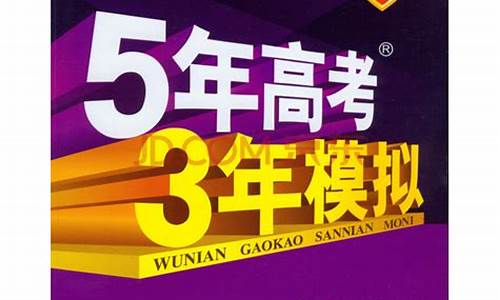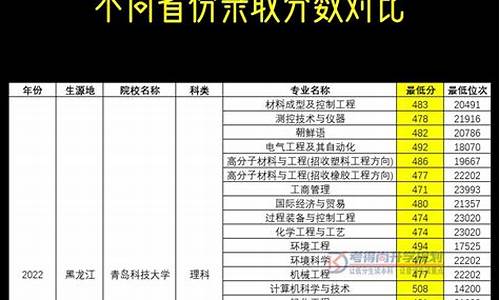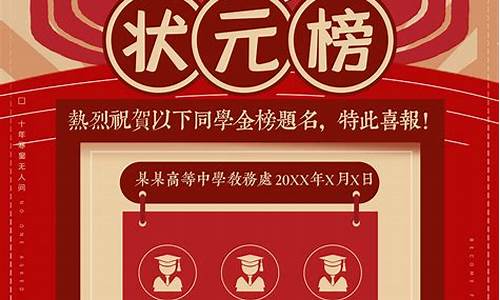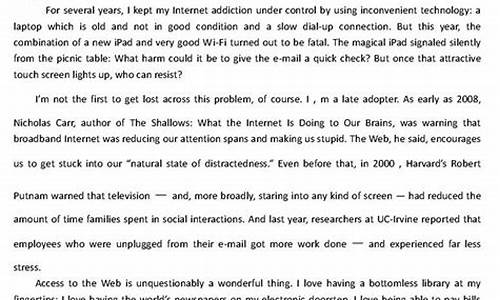您现在的位置是: 首页 > 招生信息 招生信息
2017年高考试题_2017年高考模拟试卷
tamoadmin 2024-05-30 人已围观
简介1.2017届全国100所名校最新高考模拟示范卷英语卷二的答案,谢谢,跪求2.河北英语高考题2017年3.2017年高考综合模拟桂柳金卷(三) 高三的学生免不了要做大量的试卷,这样比较容易让学生适应高考,下面是我给大家带来的有关于山东省的地理石军的介绍,希望能够帮助到大家。 山东省临沂市2017届高三地理试卷介绍 第I卷 (选择题 共50分) 本卷共25小题,每小题2分,共50分。在
1.2017届全国100所名校最新高考模拟示范卷英语卷二的答案,谢谢,跪求
2.河北英语高考题2017年
3.2017年高考综合模拟桂柳金卷(三)

高三的学生免不了要做大量的试卷,这样比较容易让学生适应高考,下面是我给大家带来的有关于山东省的地理石军的介绍,希望能够帮助到大家。
山东省临沂市2017届高三地理试卷介绍第I卷 (选择题 共50分)
本卷共25小题,每小题2分,共50分。在每小题给出的四个选项中,只有一项是最符合题目要求的。
某人驾车匀速从图1中的a地到e地,单位距离油耗仅受地形影响而变化,道路中相邻两个小黑点之间的油耗相同。据此完成1~2题。
1.行程中,a?b、b?c、c?d、d?e四路段中,一直上坡的是
A.a?b B.b?e
C.c?d D.d?e
2.推测b?d段绕行c地的影响因素最可能是
A.森林 B.地形
C.耕地 D.村落
将光伏发电技术与轨道交通相结合,不但能解决建筑本身的用能问题,还可为轨道机车提供动力。图2为我国某城市轨道交通站候车厅(局部),太阳能电池板主要集中于穹型屋顶中上部。据此完成3?4题。
3.太阳能电池板弧形延伸的方向最可能是
A.东?西方向
B.南?北方向
C.东南?西北方向
D.西南?东北方向
4.影响该城市轨道交通站候车厅太阳能电池板分布位置的主要因素是
A.昼夜长短 B.天气状况
C.日照时长 D.太阳高度
T岛是世界上著名的旅游胜地,当地热带风光旖旎。岛屿地形以山地和平原为主。图3是T岛示意图。据此完成5~6题。
5.影响T岛城镇分布的主要因素是
A.气候 B.地形 C.河流 D.洋流
6.当游客于3月24日在T岛海边看到日出美景时,北京
A.夕阳西下 B.烈日当空 C.夜幕深沉 D.晨光初现
某中学地理兴趣小组对学校附近地区进行考察,记录结果如表1。据此完成7~8题。
表l
7.花岗岩形成过程中,与其两侧接触的沉积岩可能会变质成
A.大理岩、板岩 B.片麻岩、大理岩 C.石英岩、片麻岩 D.石英岩、板岩
8.符合学生往东南方向行进时观察到的岩石的地质构造剖面是
平均气温距平是指某时段平均气温与总平均气温的差值。图4为上海地区某时段平均气温距平(℃)分布图。据此完成9~l0题。
9.若仅考虑该地区气温分布和气压之间的关系,P点此时近地面的风向大致为
A.西北风 B.西南风
C.东北风 D.东南风
10.若仅考虑等温线分布的因素,上海城市用地扩展最具潜力的方向是
A.东北方向 B.西北方向
C.西南方向 D.东南方向
柬埔寨的洞里萨湖是一个水量季节变化很大的大湖。洞里萨湖北部的吴哥通王城两边有两个巨大的长方形人工湖西池和东池。这两个大水池并不是在地面挖坑形成的,而是在地表四面筑起墙垣形成高于地面的水库,是著名的古老的灌溉工程(见图5)。据此完成11~12题。
11.这两个地上水库最主要的直接补给水源是
A.雨水 B.湖泊水
C.地下水 D.人工提水
12.这两个地上水库能有效发挥灌溉作用的时间是
A.2~6月 B.5~9月
C.8~12月 D.11~次年4月
某野外求生训练营进行荒岛求生训练时,在沙滩上利用水循环原理获取淡水,如图6所示。图7为当日塑料薄膜上下气温变化示意图。据此完成13~15题。
13.图6获取淡水过程中,未体现出的水循环环节是
A.蒸发 B.降水
C.水汽输送 D.径流
14.当日,最容易获取淡水的时段是
A.日出前后 B.中午前后
C.日落前后 D.午夜前后
15.推测目前此方法没有被世界各地用以建设海水淡化厂的最主要原因是
A.效率低 B.破坏环境
C.成本高 D.技术不成熟
毛里求斯曾经是欧洲通往印度、中国等亚洲国家途中最重要的海上补给站和中继点,战略地位十分重要。后来毛里求斯港口地位下降。图8为毛里求斯位置图。据此完成16~17题。
16.毛里求斯港口地位下降的主要原因是
A.苏伊士运河的修建 B.巴拿马运河的开通
C.北极航线的开通 D.亚欧大陆桥的修建
17.一艘油轮在毛里求斯附近发生原油泄漏,油污最可能首先出现在
A.非洲西海岸 B.日本东海岸
C.澳大利亚西海岸 D.欧洲西海岸
图9为天山博格达峰北坡垂直自然带图。据此完成18~19题。
18.图中甲自然带的类型为
A.温带落叶阔叶林带
B.温带草原带
C.温带荒漠带
D.针阔混交林带
19.博格达峰北坡自然带丰富完整,是体现垂直地带性规律的典范,其形成受下列因素影响最小的是
A.纬度位置 B.山体坡度
C.大气环流 D.海拔高度
图10模拟某流域在人为开发前后的变化,该模拟可为日后流域开发提供参考。据此完成20~21题。
20.此模拟研究主要针对的是
A.植被破坏 B.蒸发减少
C.湿地调蓄 D.降雨增加
21.人为改变后造成的流域各项特性变化,其中包括①河流流程缩短②流水侵蚀加强③河流流速加快④流域面积扩大
A.①② B.①④
C.③④ D.②③
人口净迁移率=人口迁入率-人口迁出率。图11示意我国2012年省际人口净迁移率与城市化率线性关系。据此完成22~23题。
22.据图可知
A.城市化水平与人口净迁移率呈正相关
B.受自然因素的影响,贵州人口迁出率最高
C.北京迁入人口数量最多是因为北京经济最发达
D.人口迁移在一定程度上提高了人口流入区和流出区的城市化水平
23.关于黑龙江省人口净迁移率和城市化率的叙述,正确的是
A.人口净迁移率低主要是受气候因素的影响
B.人口净迁移率低主要是受经济因素的影响
C.城市化水平较高主要是因为第三产业的迅速发展
D.城市化水平较高主要是因为黑龙江省地广人稀,人口数量少
城市不同功能区发展程度的差异可以通过功能区人口迁移结构反映出来。图12为某城市功能区某年的不同年龄段人口迁移数量统计图。据此完成24~25题。
24.该功能区最可能是
A.商业区
B.住宅区
C.工业区
D.行政区
25.该功能区内最迫切需要增加的配套设施是
A.养老院
B.医院
C.商业网点
D.幼儿园和小学
第II卷 (综合题 5小题共50分)
注意:答卷前请将答题卡最上面的项目填写清楚。
26.阅读图文材料,完成下列要求。(10分)
随着城市化进程的不断加快,人们对城市环境质量的要求和关注程度也越来越高。下面为我国华北地区某城市高中学校研究性学习小组搜集的他们所在城市的相关信息。
材料一 该城市及郊区地形剖面图 材料二 该城市1990年和2010年土地覆盖百
材料三 表2该城市市中心与郊区下午4时的气温差
(1)结合地形和植被状况,分析该城市冬季空气自净能力下降的原因。(4分)
(2)指出土地利用的变化,给该城市环境带来的负面影响。(2分)
(3)分析该城市城郊之间近地面污染物迁移的方向及原因,并提出改善城区空气质量在郊区应采取的有效措施。(4分)
27.阅读图文材料,完成下列要求。(11分)
在流域的开发过程中,土地利用发生了深刻变化,流域状况受到人类活动的强烈干扰。
材料一 滦河流域示意图(图15)
材料二 近几十年来,滦河流域气温呈显著上升趋势,图16为年降水量和年径流量变化
材料三 滦河流域土地利用类型及变化(图17)
(1)从地形、气候要素概括滦河流域自然环境的主要特征。(4分)
(2)分析从20世纪60年代至今,滦河年径流量呈下降趋势的原因。(4分)
(3)从可持续发展的角度提出保护和改善滦河流域水质的建议。(3分)
28.阅读图文材料,完成下列要求。(9分)
青海湖是我国最大的内陆咸水湖,湖泊周围地区土地荒漠化不断加剧,东西岸沙漠化面积扩大。湖区盛行西北风,最大风力达9~10级。位于布哈河口的鸟岛在20世纪70年代末由湖中孤岛变成半岛。
(1)分析鸟岛由湖中孤岛变成半岛的原因。(3分)
(2)简述青海湖东部沙漠的形成过程。(3分)
(3)为抑制湖区西部沙漠化的不断扩展,请提出治沙措施。(3分)
29.阅读图文材料,完成下列要求。(10分)
丹麦是全球将能源问题解决得最好的国家之一。
材料一 丹麦区域位置 材料二 丹麦能源消费构成变化
(1)简析丹麦水能蕴藏量不丰富的原因。(3分)
(2)简析丹麦开发利用风能资源的有利自然条件。(2分)
(3)概述1980~2005年丹麦能源消费构成的变化特点。(3分)
(4)丹麦矿物能源使用量并不大,却是欧洲酸雨严重的地区之一。简要分析其成因。(2分)
30.阅读图文材料,完成下列要求。(10分)
L河一年四季均清澈见底,掩映在绿树红花中,似项链般点缀着M城。K海峡一年中只有2个多月风平浪静,是游泳爱好者泅渡海峡的最佳季节。
(1)分析L河一年四季河流清澈见底的自然原因。(4分)
(2)N城气温较M城高,试从N城的角度分析原因。(3分)
(3)判断游泳爱好者泅渡K海峡的最佳季节并说明判断理由。(3分)
2017届全国100所名校最新高考模拟示范卷英语卷二的答案,谢谢,跪求
高中数学合集百度网盘下载
链接:提取码:1234
简介:高中数学优质资料下载,包括:试题试卷、课件、教材、视频、各大名师网校合集。
河北英语高考题2017年
高考试题全国卷
高考试题全国卷简称全国卷,是教育部为未能自主命题的省份命题的高考试卷。分为新课标Ⅰ卷和新课标Ⅱ卷。
新课标Ⅰ卷的难度比新课标Ⅱ卷难度大。
小语种(日语/俄语/法语/德语/西班牙语)高考统一使用全国卷,各省均无自主命题权,且不分新课标Ⅰ卷和新课标Ⅱ卷。
新课标一卷
2015年前使用省份:河南 河北 山西 陕西(语文及综合)湖北(综合 )江西(综合)湖南(综合)
2015年增加使用省份:江西(语文 数学 英语)、山东(英语)
2016年增加使用省份:湖北、广东、陕西、四川、重庆、福建、安徽
新课标二卷
贵州 甘肃 青海 西藏 黑龙江 吉林 宁夏 内蒙古 新疆 云南 辽宁 海南(语文 数学 英语)
2015年增加省份:辽宁 (语文 数学 英语)
2017年高考综合模拟桂柳金卷(三)
许多在眼前看来天大的事,都不是人生一战,而只是人生一站。确实高考备战让你们很辛苦,可是已经坚持了这么久,这就已经是胜利。祝高考成功!下面是我为大家推荐的河北英语高考题2017年,仅供大家参考!
河北英语高考题2017年第I卷
注意事项:
1.答第I卷前,考生务必将自己的姓名、准考证号填写在答题卡上
2.选出每小题答案后,用2B铅笔把答题卡上对应题目的答案标号涂黑。如需改动,用橡皮擦干净后,再选涂其他答案标号。不能答在本试卷上,否则无效
第一部分听力(共两节,满分30分)
做题时,先将答案标在试卷上,录音内容结束后,你将有两分钟的时间将试卷上的答案转涂到答题卡上
第一节(共5小题;每小题1.5分,满分7.5分)
听下面5段对话。每段对话后有一个小题,从题中所给的A、B、C三个选项中选出最佳选项,并标在试卷的相应位置。听完每段对话后,你都有10秒钟的时间来回答有关小题和阅读下一小题题。每段对话仅读一遍。
例:How much is the shirt?
A.£19.15. B.£9.18. C.£9.15.
答案是C。
1. Where is Mary?
A. In the classroom. B. In the library. C. On the playground.
2. How much should the man pay for the tickets?
A. $16. B. $12. C. $6
3. Why can?t the woman give the man some help?
A. She is quite busy now.
B. She doesn?t like grammar.
C. She is poor in grammar,too.
4. What happened to Marx?
A. He lost his way.
B. He found his bike missing.
C. He lost his wallet.
5. Why did the man fail to attend the party?
A. He forgot it.
B. He didn?t know about the party.
C. He wasn?t invited to the party.
第二节(共15小题;每小题1.5分,满分22.5分)
听下面5段对话或独白。每段对话或独白后有几个小题,从题中所给的A、B、C三个选项中选出最佳选项,并标在试卷的相应位置。听每段对话或独白前,你将有时间阅读各个小题,每小题5秒钟;听完后,各小题将给出5秒钟的作答时间。每段对话或独白读两遍。
听第6段材料,回答第6、7题。
6. Why must the man drive to work?
A. It is the quickest way.
B. He has to use his car after work.
C. He lives too far from the subway.
7. What?s the relationship between the speakers?
A. Boss and employee.
B. Grandmother and grandson.
C. Teacher and student.
听第7段材料,回答第8~9题。
8. When is Alice?s birthday?
A. Tomorrow. B. The day after tomorrow. C. Today.
9. What will the two speakers buy for Alice?
A. A recorder. B. Some flowers. C. A box of chocolates.
听第8段材料,回答第10~12题。
10. What does the woman do in the group?
A. Play the piano. B. Play the violin. C. Sing for the group.
11. Who is Miss Pearson?
A. Leader of the group.B. Director of the group. C. Teacher of the group.
12. How often does the group meet?
A. Once a week. B. Twice a week. C. Every third week.
听第9段材料,回答第13~16题。
13. Who possibly is the woman?
A. An air hostess. B. A native Indian. C. A travel agent.
14. How long does the trip last?
A. Seven days. B. Eight days. C. Nine days.
15. What will the man probably do at the second stage?
A. Do some shopping. B. Visit the Taj Mabal. C. See wild animals.
16. What will the speakers do next?
A. Say goodbye to each other.B. Find out the price. C. Go to India by air.
听第10段材料,回答第17~20题。
17. In what way does Jack like to travel?
A. With a lot of people.
B. With one or two good friends.
C. All by himself.
18. What does Helen prefer on holiday?
A. Staying at home.
B. Seeing famous places.
C. Enjoying nature quietly.
19. What does Bob like the best about travel?
A. Making more friends. B. Buying what he wants. C. Seeing and learning.
20. Who prefers to do shopping while traveling?
A. Jack. B. Helen. C. Bob.
第二部分阅读理解(共两节,满分40分)
第一节(共15小题;每小题2分,满分30分)
阅读下列短文,从每题所给的四个选项(A、B、C和D)中,选出最佳选项,并在答题卡上将该项涂黑。
A
We have designed all our bank cards to make your life easier.
Using your NatWest Service Card
As a Switch card, it lets you pay for all sorts of goods and services, whenever you see the Switch logo. The money comes straight out of your account, so you can spend as much as you like as long as you have enough money (or an agreed overdraft (透支) to cover it). It is also a cheque guarantee card for up to the amount shown on the card. And it gives you free access to your money from over 31,000 cash machines across the UK.
Using your NatWest Cash Card
You can use your Cash Card as a Solo card to pay for goods and services wherever you see the Solo logo. It can also give you access to your account and your cash from over 31,000 cash machines nationwide. You can spend or withdraw what you have in your account, or as much as your agreed overdraft limit.
Using your cards abroad
You can also use your Service Card and Cash Card when you?re abroad. You can withdraw cash at cash machines and pay for goods and services wherever you see the Cirrus or Maestro logo displayed.
We take a commission charge (手续费) of 2.25% of each cash withdrawal you make (up to£4) and a commission charge of 75 pence every time you use Maestro to pay for goods or services. We also apply a foreign-exchange transaction fee of 2.65%.
Using your NatWest Credit Card
With your credit card you can do the following:
* Pay for goods and services and enjoy up to 56 days? interest-free credit.
* Pay in over 24 million shops worldwide that display the MasterCard or Visa logos.
* Collect one AIR MILE for every£20 of spending that appears on your statement (结算单). (This does not include foreign currency or traveler?s cheques bought, interest and other charges.)
21. If you carry the Service Card or the Cash Card, ________.
A. you can use it to guarantee things as you wish
B. you can draw your money from cash machines conveniently
C. you can spend as much money as you like without a limit
D. you have to pay some extra money when you pay for services in the UK
22. If you withdraw£200 from a cash machine abroad, you will be charged ________.
A. £4 B. £4.5 C. £5.25 D. £5.3
23. Which of the following is TRUE about using your NatWest Credit Card?
A. You have to pay back with interest within 56 days.
B. You can use the card in any shop across the world.
C. You will be charged some interest beyond two months.
D. You will gain one air mile if you spend £20 on traveller?s cheques.
24. The purpose of the passage is to show you how to ________.
A. pay for goods with your cards B. use your cards abroad
C. draw cash with your cards D. play your cards right
B
Once when I was facing a decision that involved high risk, I went to a friend. He looked at me for a moment, and then wrote a sentence containing the best advice I?ve ever had: Be bold and brave ? and mighty (强大的) forces will come to your aid.
Those words made me see clearly that when I had fallen short in the past, it was seldom because I had tried and failed. It was usually because I had let fear of failure stop me from trying at all. On the other hand, whenever I had plunged into deep water, forced by courage or circumstance, I had always been able to swim until I got my feet on the ground again.
Boldness means a decision to bite off more than you can eat. And there is nothing mysterious about the mighty forces. They are potential powers we possess: energy, skill, sound judgment, creative ideas ? even physical strength greater than most of us realize.
Admittedly, those mighty forces are spiritual ones. But they are more important than physical ones. A college classmate of mine, Tim, was an excellent football player, even though he weighed much less than the average player. ?In one game I suddenly found myself confronting a huge player, who had nothing but me between him and our goal line,? said Tim. ?I was so frightened that I closed my eyes and desperately threw myself at that guy like a bullet ? and stopped him cold.?
Boldness ? a willingness to extend yourself to the extreme?is not one that can be acquired overnight. But it can be taught to children and developed in adults. Confidence builds up. Surely, there will be setbacks (挫折) and disappointments in life; boldness in itself is no guarantee of success. But the person who tries to do something and fails is a lot better off than the person who tries to do nothing and succeeds.
So, always try to live a little bit beyond your abilities?and you?ll find your abilities are greater than you ever dreamed.
25. Why was the author sometimes unable to reach his goal in the past?
A. He faced huge risks. B. He lacked mighty forces.
C. Fear prevented him from trying. D. Failure blocked his way to success.
26. What is the implied meaning of the underlined part?
A. Swallow more than you can digest. B. Act slightly above your abilities.
C. Develop more mysterious powers. D. Learn to make creative decisions.
27. What can be learned from Paragraph 5?
A. Confidence grows more rapidly in adults. B. Trying without success is meaningless.
C. Repeated failure creates a better life. D. Boldness can be gained little by little.
C
The wallet is heading for extinction. As a day-to-day essential, it will die off with the generation who read print newspapers. The kind of shopping-where you hand over notes and count out change in return?now happens only in the most minor of our retail encounters,like buying a bar of chocolate or a pint of milk from a corner shop. At the shops where you spend any real money, that money is increasingly abstracted. And this is more and more true, the higher up the scale you go. At the most cutting-edge retail stores?Victoria Beckham on Dover Street, for instance?you don't go and stand at any kind of cash register when you decide to pay. The staff are equipped with iPads to take your payment while you relax on a sofa.
Which is nothing more or less than excellent service, if you have the money. But across society, the abstraction(抽象) of the idea of cash makes me uneasy. Maybe I'm just old-fashioned. But earning money isn't quick or easy for most of us. Isn't it a bit incredible that spending it should happen in half a blink(眨眼)of an eye? Doesn't a wallet?that time-honoured Friday-night feeling of pleasing, promising fatness?represent something that matters?
But I'll leave the economics to the experts. What bothers me about the death of the wallet is the change it represents in our physical environment. Everything about the look and feel of a wallet?the way the fastenings and materials wear and tear and loosen with age, the plastic and paper and gold and silver, and handwritten phone numbers and printed cinema tickets?is the very opposite of what our world is becoming. The opposite of a wallet is a smartphone or an iPad. The rounded edges, cool glass, smooth and unknowable as pebble(鹅卵石). Instead of digging through pieces of paper and peering into corners, we move our fingers left and right. No more counting out coins. Show your wallet, if you still have one. It may not be here much longer.
28. What is happening to the wallet?
A. It is disappearing. B. It is being fattened.
C. It is becoming costly. D. It is changing in style.
29. What makes the author feel uncomfortable nowadays?
A. Saving money is becoming a thing of the past.
B. The pleasing Friday-night feeling is fading.
C. Earning money is getting more difficult.
D. Spending money is so fast and easy.
30. Why does the author choose to write about what's happening to the wallet?
A. It represents a change in the modern world.
B. It has something to do with everybody's life.
C. It marks the end of a time-honoured tradition.
D. It is the concern of contemporary economists.
31. What can we infer from the passage about the author?
A. He is resistant to social changes.
B. He is against technological progress.
C. He feels reluctant to part with the traditional wallet.
D. He feels insecure in the ever-changing modern world.
2017年高考综合模拟桂柳金卷(三)
高考志愿胡乱填,毕业三年不见钱。又到了一年毕业季,报考季。好多人问我志愿如何填,学校如何选,我在这里做一个简单的说明,供大家在报考时做点参考。
准备工作:
你需要准备的有,所在省的今年和以前三到四年的高考成绩一分一段表、今明所在省的高校招生计划表、所在省的前三到四年的各高校录取分数线一览表(越详细越好)。
筛选学校的一般步骤:
1、 对照你的高考成绩,和今年的一分一段表,确定你的省排名。
2、 确定省排名后,对照前几年的一分一段表,了解前几年这个排名的大概分数。
3、 对照前几年的各高校录取分数线一览表,看对应年份,大概可以报考的学校范围。
4、 根据自己的身体条件,家庭经济条件等硬性条件筛选学校,划定目标学校专业范围。
5、 查看今年的招生计划,确定这些学校专业的招生人数是否有较大的变动,招生政策是否有变等等。
6、 逐渐缩小范围,确定志愿。









